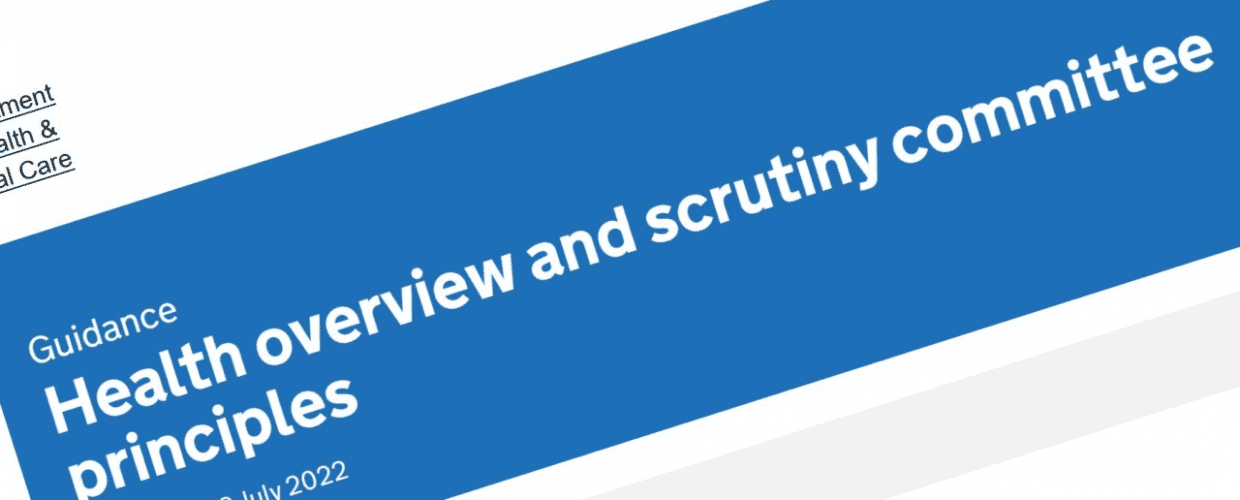The news that local authorities in England will retain their power to refer disputed health service reconfiguration proposals to the Secretary of State “until the new reconfiguration provisions take effect” will make many NHS programme managers a bit twitchy. Especially when coupled with the news that “changes to the reconfiguration process introduced through the Health and Care Act 2022 [The health secretary’s new intervention powers] will not be implemented immediately” with exact timelines “still to be determined”.
Reconfiguration programmes rely on planning that understands and nails down risks in tight monitoring and management frameworks.
One of the huge benefits of the current scrutiny framework is that it has been in place for two decades and is well known and understood. It’s reliable and predictable. It works best when the relationship between the scrutiny panel and local NHS leaders are open and respectful. It is strong enough to withstand tensions when those relationships are not present.
We know the power to refer will go, but we don’t know when. We know there will be a new process to support the Secretary of State’s power to intervene in service reconfiguration programmes, but we don’t know what that will be.
So, we enter a twilight zone for health scrutiny.
For those of you steering sensitive service change proposals through the rigors of the scrutiny process right now, this will be an unwelcome sprinkling of uncertainty as some scrutiny panels race towards using that referral power while they still can.
The new guidance, Health overview and scrutiny committee principles, sets out five principles and ways of working between Health Overview and Scrutiny Committees (HOSC), Integrated Care Boards (ICBs), Integrated Care Partnerships (ICPs) and other local system partners to ensure the benefits of scrutiny are realised:
- outcome focused
- balanced
- inclusive
- collaborative
- evidence informed
The principles are good. For many they will prove to be a solid foundation for open and trusting relationships that stretch way into the future.
At the moment scrutiny committees can refer a reconfiguration of services on three grounds. 1 – that the NHS didn’t consult them. 2 – that the time allowed for consultation or the information provided to support consultation were inadequate. And 3 – that the change proposals are not in the interest of the area of health services in the area covered by the committee. It’s this third one that will perhaps be the most significant loss. That has been local politicians’ chance to make the case to their constituents that they did all they could. Using it has elevated the issue above local politics into the Independent Reconfiguration Panel (IRP) process. The IRP’s rational and objective take on these issues has provided the route to overcome many a local impasse.
The big danger is that under the new system we will see much greater politicisation of local health service decisions. I’m hoping that eventuality will be avoided with regulations for the new process that are as balanced as those we’ve become used to.
The reality is that the remaining powers will still be sufficient to compel NHS bodies to take scrutiny seriously. And scrutiny committees will have to think differently about how they wield those powers.
If you want to talk to us about how to assess and manage the risks for your reconfiguration programme, drop me a line to book a free call with us Paul@WeAreStand.co.uk
Blog by: Paul Parsons


